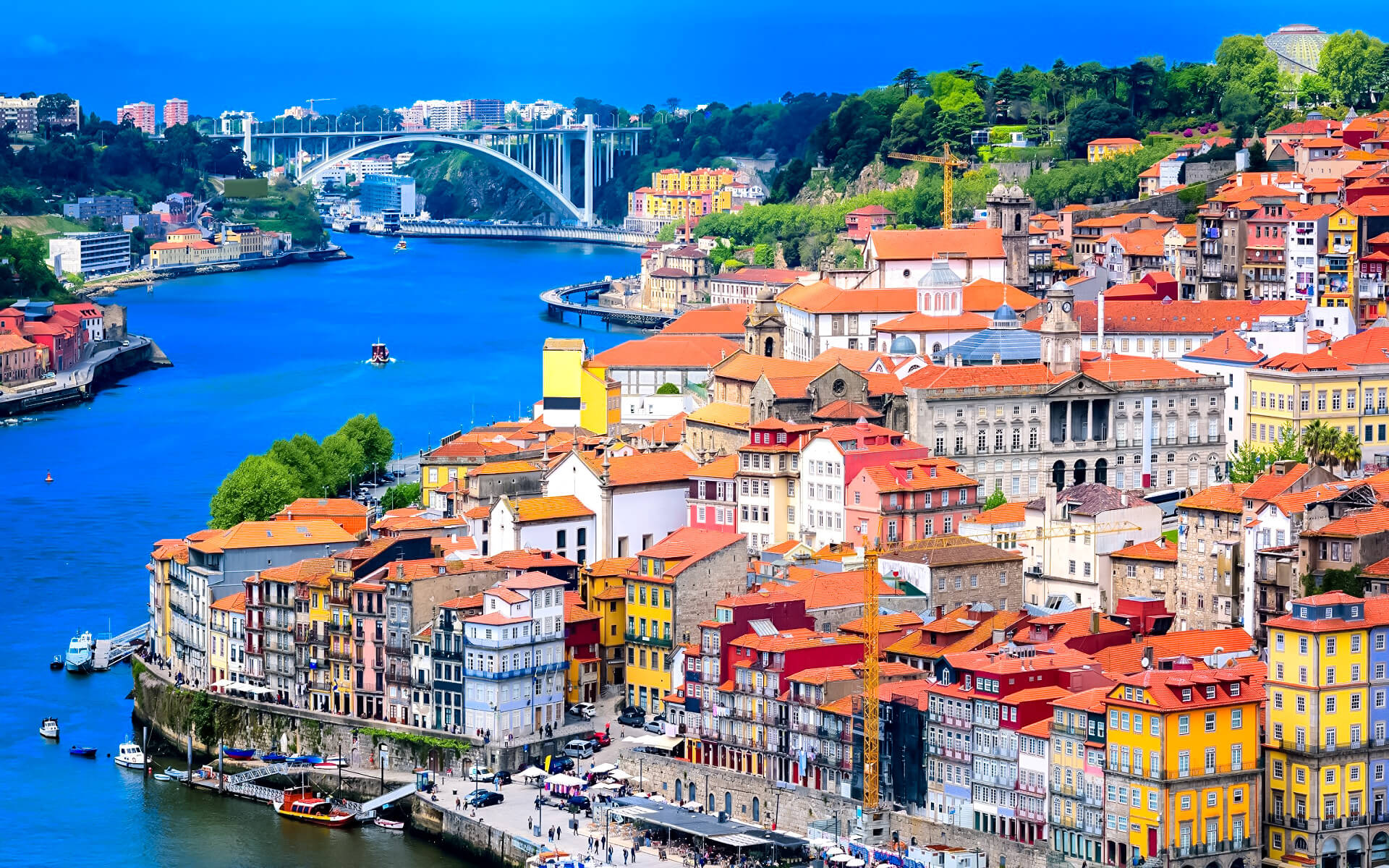Many of the largest Portuguese corporations from diverse economic sectors, such as Altri, Ambar, Amorim, Bial, Cerealis, BPI, CIN, EFACEC, Frulact, Lactogal, Millennium bcp, Porto Editora, Grupo RAR, Sonae, Sonae Indstria, and Unicer, are headquartered in the Greater Metropolitan Area of Porto, most notably in the core municipalities of Maia, Matosinhos, Porto, and Vila Nova de Gaia.
Petrogal, the country’s largest exporter, has one of its two refineries near the city at Leça da Palmeira (13 km), while Qimonda, the country’s second largest exporter (now bankrupt), has its lone facility in Mindelo, also near the city (26 km).
The city’s former stock exchange (Bolsa do Porto) was transformed into Portugal’s largest derivatives exchange and merged with the Lisbon Stock Exchange to form the Bolsa de Valores de Lisboa e Porto, which eventually merged with Euronext, along with the stock and futures exchanges of Amsterdam, Brussels, LIFFE, and Paris. The building that formerly housed the stock market is now one of the city’s tourist attractions, with the Salo rabe (Arab Room in English) being its main draw.
Jornal de Noticias, a popular Portuguese daily, is based in Porto. The building where its offices are housed (which has the same name as the newspaper) was formerly one of the city’s tallest (it has been superseded by a number of modern buildings which have been built since the 1990s).
Porto Editora, one of the most important Portuguese publishers, is also located in Porto. Its dictionaries are among the most widely used in the nation, and its translations are also widely utilized.
Since the Middle Ages, commercial links between Porto and the Upper Douro River have been established. They were, however, substantially expanded in the contemporary era. Sumach, dried fruits and nuts, and Douro olive oils, in fact, fueled flourishing trade between the area and Porto. These items were shipped from the riverfront quays near the river’s mouth to various marketplaces in the Old and New Worlds. The commercial dynamics of the Port wine (Vinho do Porto) agricultural sector, however, proved to be the most powerful interregional trade lever. It unquestionably strengthened the complementary relationship between the large coastal urban center, endowed with open doors to the sea, and a region with significant agricultural potential, particularly in the production of extremely high quality fortified wines known by the world-famous labelPort. The growth of Porto was also strongly linked with the left bank of the Douro River near Vila Nova de Gaia, where the amphitheatre-shaped hill with the Port wine cellars is situated.
Porto was placed last in a study of the competitiveness of the 18 Portuguese district capitals. The study was conducted by Minho University economists and was published in the Pblico newspaper on September 30, 2006. The study’s top three cities were Évora, Lisbon, and Coimbra. Nonetheless, the study’s validity was questioned by certain Porto significant personalities (such as local politicians and businesspeople), who contended that the city proper did not operate independently, but rather in conurbation with surrounding municipalities. A fresh list published in the Portuguese daily Expresso in 2007 titled “The Best Cities to Live in Portugal” rated Porto third (tied with Évora), behind Guimares and Lisbon. Because the two studies utilize different dependent measures, they are not directly comparable.
The Porto metropolitan area has a GDP of $43.0 billion and a per capita income of $21,674.


